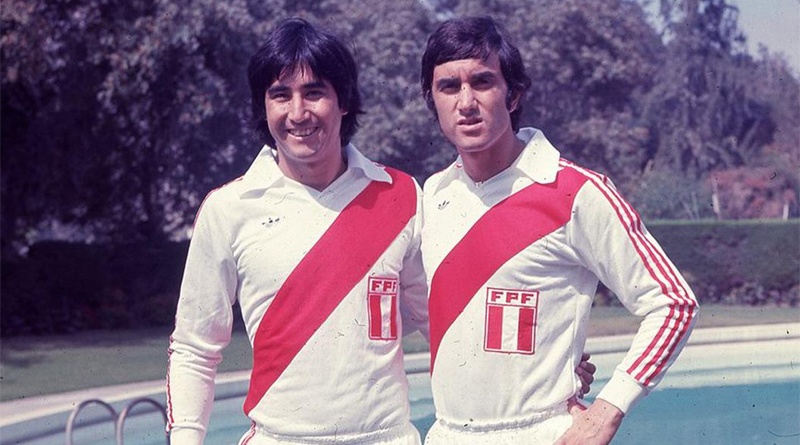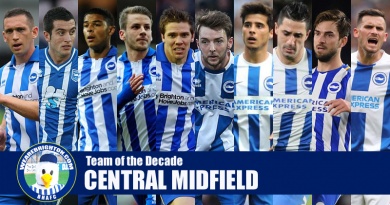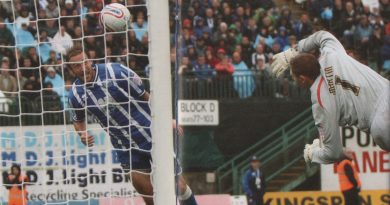World Cup 1978: Oblitas, Rojas and Brighton & Peru Albion
The year is 2022. The Albion are rather fond of a South American. They will have three representatives with Ecuador at the Qatar World Cup and one with Argentina. Had Paraguay and Colombia qualified, another two. This link with the continent is nothing new; it can be traced as far back as 44 years and 11 World Cups to when Juan Carlos Oblitas and Percy Rojas nearly turned Brighton & Hove Albion into Brighton & Peru Albion.
1978 was the year then. The tournament was held in Argentina and won by the hosts. Ossie Ardiles and Ricky Villa moved to Tottenham Hotspur after lifting the famous gold trophy in Buenos Aires and were an instant success at White Hart Lane.
Inspired by that Argentine duo six months after their arrival at Spurs, Mike Bamber decided to try and follow suit by bringing some South American flair to Brighton in February 1979.
Peru had been one of the most entertaining sides at the 1978 World Cup. They won Group 4 with crushing victories, beating Scotland 3-1 and Iran 4-1 either side of a 0-0 draw with eventual finalists the Netherlands whom they finished above in the table.
The 1978 tournament involved a second group stage, the winners of which advanced to the final. Peru faltered here, losing all three of their matches to Poland, Brazil and Argentina.
Their defeat to the hosts in the final round of matches was not without controversy. Brazil had beaten Poland 3-1 earlier in the day, meaning Argentina knew that they needed to hammer Peru by four clear goals to reach the final on goal difference.
Lo and behold, it finished Argentina 6-0 Peru. A fantastic array of rumours about how Argentina were able to secure the big victory they needed have surrounded the game ever since.
One goes that the authoritarian Argentine military government who seized power through a coup two years earlier had intimidated Peru into collapsing, needing their home nation to win for propaganda purposes.
There were also talks of interference at a political level between governments. That an agreement was struck for 13 Peruvian dissidents living in exile in Argentina to be sent back to Peru. Or that a grain shipment and the unfreezing of bank accounts by the Argentine Central Bank were involved.
Some said it was merely cold, hard cash paid to the Peruvian players that led to Argentina getting the 6-0 win they required.
Of course, it might just have been that Argentina were the better team. Peru had won only three of 18 meetings between the nations and never outside of their own country.
And if Peru had been intimidated or instructed into losing, hitting the post twice in the first half with the score at 0-0 looked a strange way of going about it.
Peru knew only how to attack; Argentina were deadly on the counter. Hence six Argentine goals as they gleefully picked off their opponents, taking advantage of the wide open spaces being left as Peru flooded forward.
Despite Peru struggling in the second group stage, Oblitas was voted as the best winger at the tournament. He started every game and gave a series of dazzling displays on the left, lighting up the competition with his devastating skills.
Three years before the World Cup and Oblitas had scored three goals to fire Peru to the 1975 Copa America. Striker Rojas was just behind in the scoring charts with two.
1975 proved to be quite the year for Rojas as he also lifted the Copa Libertadores with Argentine side Indepndentiente.
His record at the World Cup was less impressive; three substitute appearances without scoring. To have been a continental champion at both club and international level in the same year however showed his quality.
Brighton bringing two South American stars to the second tier of English football would have been a sensational coup. Alan Mullery’s side were about to enter a crucial stage of the 1978-79 season as they attempted to secure a first ever promotion to the top flight.
Oblitas supplying Peter Ward and Teddy Maybank was quite the prospect. So too Rojas coming in to share the goals burden with that front pairing.
And if Oblitas and Rojas helped take Brighton into Division One, the duo from Peru would then surely have a big part to play in keeping the Seagulls there.
Such quality would not come cheap. Their Peruvian club Sporting Cristal wanted £400,000 for the duo. At the time, Maybank was the most expensive signing in Brighton history having cost £238,000 from Fulham in November 1977.
To fund the deal, Bamber decided to seek a club in the United States to split the cost of each player with. Both the San Diego Sockers and the Tampa Bay Rowdies were said to be interested in going halves on Oblitas, who would then turn out in the North American Soccer League during the summer.
So far, so good. But as Brighton in 2022 will tell you, doing deals for South American players is notoriously hard. And if it is difficult in the 21st century, imagine what it was like in 1979.
Brighton paid the airfares of Oblitas, Roja and the president of Sporting Cristal to fly from Peru to England. They were due to arrive on a Friday afternoon and play in a friendly against Brentford at the Goldstone Ground on the Monday. Except they never turned up.
Oblitas and Roja believed for unknown reasons that said friendly was instead against Nottingham Forest. Having also been linked with a move to the City Ground and not having trained for nine weeks leaving them concerned about their fitness, they decided to stay in Peru.
To try and clear up the confusion, Eddie Buckley – the agent who brought Ardiles and Villa to Spurs – flew to Peru. Problems with tax then further held up Oblitas and Roja leaving South America but they did eventually arrive in Brighton.
It was reported that they found the weather, the training style and the language barrier difficult. Doubts also began to surface about whether Oblitas was actually the age he was claiming to be.
Still, the Albion put on a hastily arranged friendly against Bournemouth to take a look at the duo. With the Goldstone unavailable, Brighton had to use Hove Greyhound Stadium instead; seven months after Oblitas and Rojas had been playing in a World Cup for Peru, they were turning out at a dog track in England.
Oblitas was the star turn whilst Rojas joined Ward on the scoresheet in a 2-2 draw. Hopefully, the Peruvians had the Greyhound Stadium’s signature dish of fried chicken in a basket to celebrate.
Chicken in a basket or no chicken in a basket, unfortunately for Rojas it was the end of his Albion story. Brighton decided they were no longer interested and although the striker harboured ambitions of finding another English club, he returned to Peru and Sporting Cristal.
Mullery still wanted Oblitas, even though nobody could establish how old he was and it was becoming increasingly clear that securing a work permit would be far less straightforward than Bamber had envisioned.
As the March 8th transfer deadline day ticked into view with little progress made, Brighton became resigned to the fact that Oblitas would only be available for the 1979-80 season rather than immediately joining the promotion push.
Whilst not ideal, Oblitas would still offer something no matter what division the Albion were in come August. What finally killed the deal was the Tampa Bay Rowdies pulling out after Oblitas went on trial with them in the US.
Brighton were not willing to pay the full £200,000 for Oblitas. To fork out the second-highest fee in Albion history for a player who may not adapt to English football, had a language barrier to overcome and whose age was still to be confirmed seemed like a risk too far.
With no other club available to split the bill and lessen that risk, Bamber and Mullery had to begrudgingly withdraw. The dream of Brighton & Peru Albion was over.
The Albion of course secured promotion to the top flight and went onto stay there for four seasons. Oblitas and Rojas spent the rest of their playing careers in Peru, going onto represent their country at a second World Cup in 1982 and winning a glittering haul of domestic trophies between them.
Wonder what they make of Alexis Mac Allister, Moises Caicedo, Pervis Estupinan, Jeremy Sarmiento, Julio Enciso, Steve Alzate and Brighton’s South American connection four decades later?




